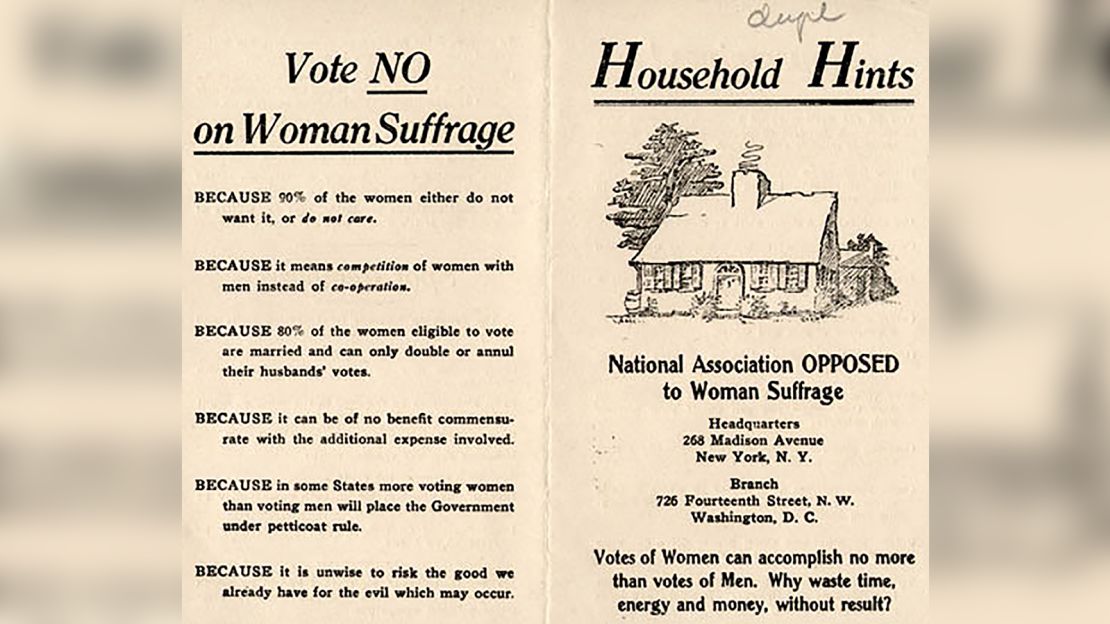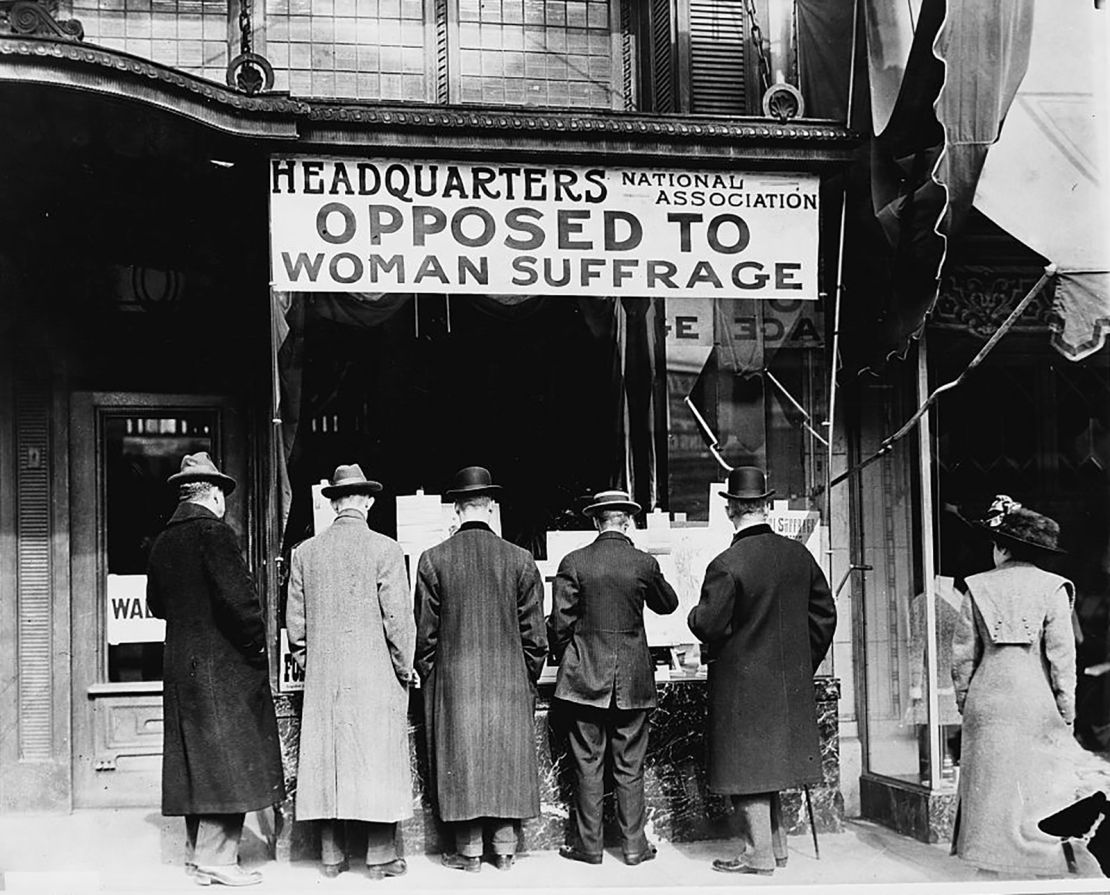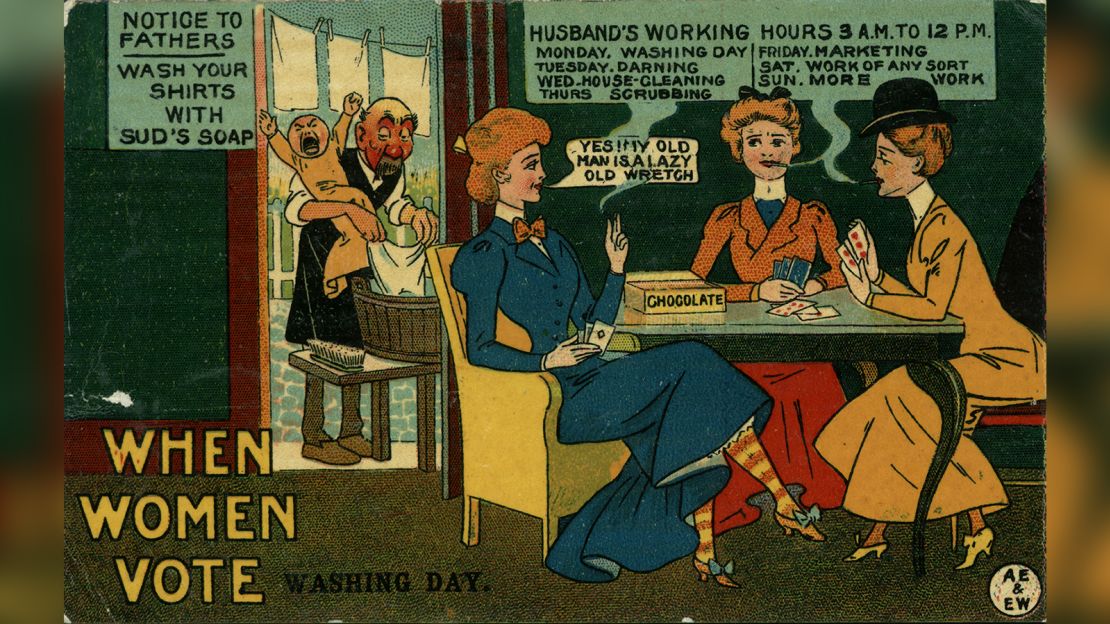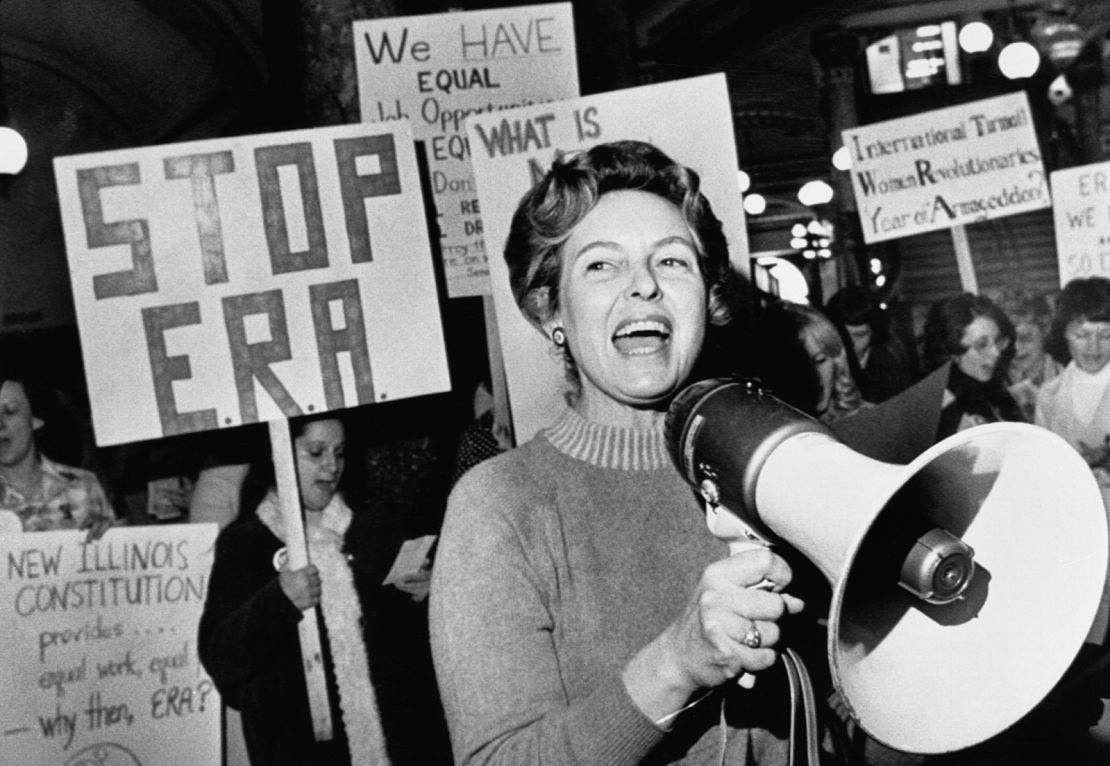Editor’s Note: Nicole Hemmer is an associate research scholar at Columbia University with the Obama Presidency Oral History Project and the author of “Messengers of the Right: Conservative Media and the Transformation of American Politics.” She co-hosts the history podcast “Past Present” and “This Day in Esoteric Political History.” The views expressed in this commentary are solely those of the author. View more opinion articles on CNN.
On a Friday afternoon in April 1909, a group gathered in lower Manhattan to debate women’s right to vote (a right extended at that time only to women in select Western states, except for a few others that allowed women to vote in school-related elections).

The arguments echoed those that had been made for decades: the pro-suffragists insisted women’s vote would improve the lives of women and children and fulfill the American promise of self-government; the anti-suffragists warned that it would lead to open warfare between men and women, destroying families across the country. While the debates were not unusual, the setting was: the Woman’s University Club. All the attendees – and debaters – were women, including the ones arguing against women’s suffrage.
The women who opposed women’s right to vote have often been left out of the story of suffrage, not only because they were on the losing side, but also because it’s hard to know what to make of them. They’re not laughable villains like male anti-suffragists, conspiring to keep women in a state of second-class citizenship while hogging all the rights for themselves. Even the pro-suffragists at the University Club spoke of them more with pity than contempt. “It saddens me, I confess, when I meet women who are exerting themselves to oppose suffrage,” said suffragist Fanny Garrison Villard (identified in the New York Times only as “Mrs. Henry Villard”). “After what has been done for them in the way of education it ill becomes them.”
Villard voiced a perspective – that women should know better than to oppose their own rights – that persisted long after American women formally secured the right to vote in 1920. As reactions to the popular miniseries “Mrs. America” and the 2016 election returns attest, many Americans remain fascinated with or befuddled by the women who marched against the Equal Rights Amendment or who voted for a man who openly bragged about sexual assault.
That confusion rests on a set of mistaken assumptions about women’s interests: what exactly they are and how women come to understand them. Talk of women’s interests, like the interest of other marginalized groups, often trades in flat stereotypes, treating all members of the group as though they think, and vote, the same. But as the anti-suffragist women show, women have been shrewd political actors, understanding – and protecting – their sources of power in unexpected ways.

Anti-suffrage women had been a political force since at least the late 1860s, when word that Massachusetts might extend the vote to women led 200 women to petition against giving themselves the vote. Women-led anti-suffrage drives never amounted to a mass movement, but they were a regular feature of the fight for the ballot over the next half-century, as women with social status fought to protect the power they had accumulated in a country that had mostly excluded them from electoral politics.
And women – especially the wealthy White women who led this wing of the anti-suffrage fight – had found ways to exercise power. They made the patriarchy work for them by setting up shop in the informal spaces of political power: the organizations, charities and associations that allowed them to expand their dominion over the private sphere into issues like public education and public health. They feared that, were women given the vote, they would lose their place of privilege and influence in these areas.

Anti-suffragism was not just a matter of societal benevolence, of course. Women anti-suffragists understood their interests as women lay not in the ballot box, but in being White, wealthy and well-connected, as nearly all leading anti-suffrage women were. They knew what power they had relied on the existing social order and flowed from their position at the top of a hierarchy. Any form of democracy that widened voting rights threatened that hierarchy. Northern anti-suffragists worried about poor and immigrant women flooding the ballot box; southern anti-suffragists saw suffrage for women as a Trojan horse for the Black vote.
This is, by the way, why Black women were not found in the ranks of leading anti-suffrage women or in the public leadership of their opposition. Quite rightly, most Black American women looked with suspicion at the suffrage organizations led by White women who regularly excluded them, but they also had little vested interest in upholding a system that had allowed White Jim Crow governments to effectively strip Black men of the vote just a few decades after the 15th amendment had secured it for them.

Anti-suffrage women were, then, fundamentally conservative: they sought to conserve an existing social landscape. But that didn’t mean that some of them didn’t also embrace progressive politics. Take Josephine Jewell Dodge, president of the National Association Opposed to Women’s Suffrage. She spent years working to create childcare programs for working-class families on the Lower East Side in New York and believed that, should women get the right to vote, their ability to achieve such reforms would be destroyed – corrupted by the evils of electoral politics.
Such arguments reflected the same sort of divisions that split women in the labor movement, who clashed over whether women deserved special protections because they were physically weaker than men or equivalent protections because they were men’s equal. (Such fights would continue for the rest of the 20th century.)

With the ratification of the 19th Amendment in 1920, the anti-suffragist cause was defeated. But the underlying idea – women against women’s liberation – continued to be a powerful force in the US. In the 1970s, it emerged as a counterforce to a new feminist movement. As women fought for another constitutional amendment – the Equal Rights Amendment, which would have guaranteed equal rights regardless of sex – anti-feminist forces rallied under the leadership of activist Phyllis Schlafly.
Schlafly, a lawyer who had run for office, co-written foreign policy books and helped organize the modern conservative movement, clearly benefited from 20th century advances in women’s rights. But she also benefited, materially and socially, from the conservative movement and its opposition to what was then called “women’s liberation.” In the 1970s, Schlafly became a household name when she organized opposition to the Equal Rights Amendment – opposition that ultimately succeeded in preventing its ratification.
Memorialized recently in “Mrs. America,” Schlafly still strikes many people as a political curiosity, an odd woman who opposed women’s rights. But in calculating her interests as a wealthy White woman, she saw beyond the promise of equality to the recognition that the patriarchy had actually done quite a lot for her, and she had comparatively little to gain from smashing it. Opposing feminism was, as the series goes to great lengths to illustrate, a gateway to political power, an entrée into echelons of power in the Republican Party that had previously eluded her.
Schlafly’s political influence persisted into the 21st century; she lived long enough to support Donald Trump for president. Women anti-feminists like Schlafly, like women anti-suffragists before them, upend expectations of “women’s interest,” a flattening phrase that erases nuance from our understanding of how all women evaluate the world. We notice it more when people are arguing against their own rights, but it’s always there: in the White women who excluded Black women from organizing, in the Black women who focused as much on Black men’s vote as their own, in the activists who believed political equality without economic equality meant nothing.
Returning anti-suffrage women to the story of women’s rights forces us to pay attention to these negotiations. In the process, it allows us to see that the way women – the way members of any group – assess their own interests may not be as clear-cut as we expect.


